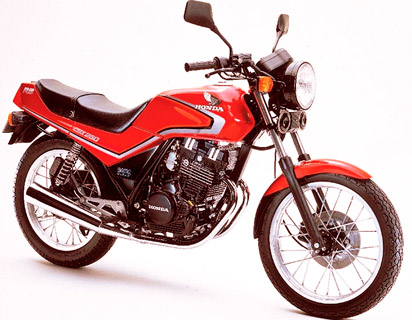 The positive results of the use of four-valve engines in mass-produced cars have made, that Honda has used this in a single-cylinder motorcycle engine. This engine is fitted to the CBX 250 RS and has displacement 250 cm3 at the diameter of the piston 72 mm. The compression ratio is 10,5.
The positive results of the use of four-valve engines in mass-produced cars have made, that Honda has used this in a single-cylinder motorcycle engine. This engine is fitted to the CBX 250 RS and has displacement 250 cm3 at the diameter of the piston 72 mm. The compression ratio is 10,5.
In the head of this original engine there are four valves radially arranged in relation to the semicircular combustion chamber, controlled by two camshafts. Particularly noteworthy is the timing system, which consists of proper rockers cooperating with the camshaft and intermediate rockers placed at right angles to the longitudinal axis of the shafts.
The use of radial valves made it possible to effectively use the semicircular chamber, thereby maximizing the combustion efficiency of the mixture.
An efficient flow of mixture to the engine is ensured by a twin intake manifold and a twin barrel carburetor. Both intake manifolds are connected by an intermediate channel. At low engine loads and low engine speed, the mixture is supplied to the combustion chamber from only one carburetor throat, but both collectors, part of the mixture flows through the intermediate channel. During this time, the second carburetor throttle is closed, which significantly reduces fuel consumption. Supplying the mixture through two collectors increases its swirl near the spark plug centrally located in the chamber. Double manifolds are also used in the engine exhaust system. They allow the combustion chamber to be quickly emptied of gases and more efficiently filled with a new charge.
The original Honda engine is powerful 22 kW at 9500 RPM, by 8000 the rpm, on the other hand, reaches its maximum torque 24 Nm. Assesses itself, that a motorcycle with this engine consumes an average 1,7 dm3 of fuel per 100 km. The weight of the motorcycle is 129 kg.
CBX motorcycle exploitation attractiveness 250 The RS enhances the use of a six-speed gearbox that allows optimal use of engine power in various driving conditions.